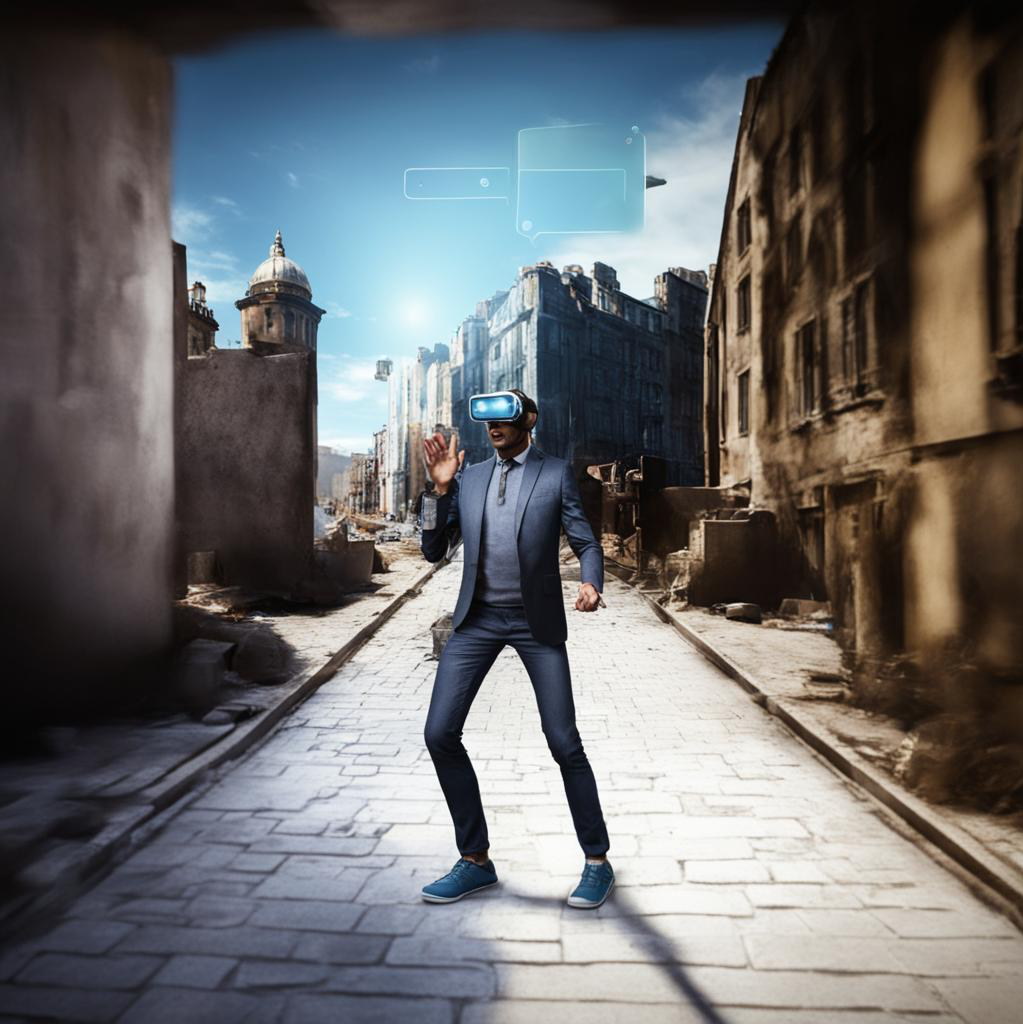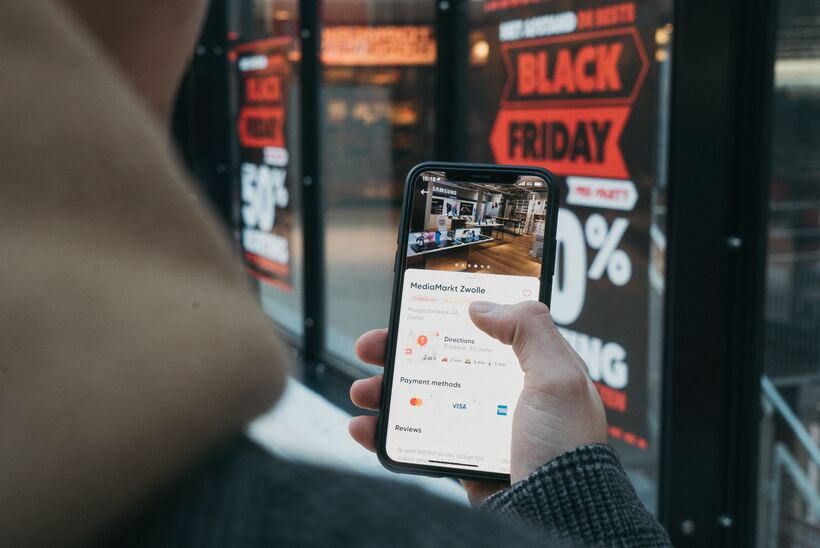Welcome to the future of retail shopping! Gone are the days of wandering through crowded stores, struggling to find what you need. Thanks to groundbreaking technology, a new era has dawned upon us – one where augmented reality (AR) takes center stage in revolutionizing the way we shop.
Imagine being able to try on clothes without stepping foot into a fitting room or visualizing furniture in your living room before making a purchase. With AR, these experiences are no longer figments of our imagination but tangible realities that enhance our shopping journey. In this blog post, we will delve into the world of AR and explore how it is reshaping consumer behavior and transforming the retail industry as we know it.
So fasten your seatbelts as we embark on an exhilarating journey through the realm of augmented reality – where virtual meets reality in ways never imagined before!

What is Augmented Reality (AR)?
What exactly is this buzzworthy term, augmented reality (AR)? Simply put, AR is a technology that superimposes digital elements onto the real world, creating an interactive and immersive experience for users. Unlike virtual reality (VR), which completely transports you to a simulated environment, AR blends the physical and digital worlds seamlessly.
The magic behind AR lies in its ability to overlay computer-generated images or information on top of our view of the real world. This can be achieved through various devices such as smartphones, tablets, or even specialized headsets. By using cameras and sensors to track your surroundings in real-time, AR enhances your perception and interaction with the world around you.
One of the key features of AR is its versatility across different industries. From gaming to education to healthcare – there are countless applications for this transformative technology. In retail specifically, it offers an exciting opportunity for businesses to engage customers in new and captivating ways.
With AR-enabled shopping experiences, consumers can explore products virtually before making a purchase decision. Imagine trying on virtual clothes without stepping into a fitting room or visualizing how that sleek sofa would look in your living room before hitting “buy.”
Intriguingly enough, augmented reality also has immense potential beyond just product visualization. It opens doors for innovative marketing campaigns where brands can create interactive ads or gamified experiences that captivate their audience like never before.
The Impact of AR on Consumer Behavior
Augmented Reality (AR) has had a significant impact on consumer behavior, revolutionizing the way people shop and interact with brands. By blending the digital world with the physical environment, AR provides consumers with immersive and engaging experiences that influence their purchasing decisions.
One key impact of AR on consumer behavior is increased engagement. With AR technology, retailers can create interactive product displays and virtual try-on experiences that capture customers’ attention and keep them engaged for longer periods. This heightened engagement not only enhances brand awareness but also increases the likelihood of conversion.
AR has the power to bridge the gap between online and offline shopping experiences. Through mobile applications or in-store installations, customers can visualize products in their own environment before making a purchase decision. This eliminates uncertainties about how products will look or fit in real life, ultimately reducing returns and enhancing customer satisfaction.
AR also taps into consumers’ desire for personalization and customization. With AR-enabled platforms, shoppers can customize products by changing colors, patterns, or even adding personalized elements. This level of interactivity creates a sense of ownership over the final product, leading to higher levels of customer loyalty.
Studies have shown that AR experiences generate positive emotions among users which translates into higher purchasing intentions. The novelty factor combined with an element of surprise elevates consumers perception of value associated with a product or service.
Augmented Reality continues to shape consumer behavior by providing unique shopping experiences that blend both convenience and excitement together seamlessly. As more retailers embrace this transformative technology in their strategies moving forward, we can expect even more innovative uses of augmented reality in retail – from virtual showrooms to enhanced customer support – further cementing its position as the future of retail shopping.
Examples of Successful AR Retail Experiences
1. Virtual Try-Ons: One of the most popular uses of augmented reality in retail is enabling customers to virtually try on products before making a purchase. Beauty brands like Sephora and L’Oreal have developed AR apps that allow users to see how different shades of makeup will look on their face, eliminating the need for physical swatches or samples.
2. Interactive Product Displays: AR can transform static product displays into interactive experiences. For instance, furniture retailers like IKEA use AR technology to let customers visualize how a specific piece of furniture would look in their home by overlaying a virtual image onto their camera view.
3. Enhanced Shopping Experiences: Some retailers are leveraging AR to enhance the overall shopping experience for customers. Nike’s SNKRS app uses augmented reality features to create limited edition sneaker drops where users can unlock exclusive content or virtual experiences when they scan certain products in-store.
4. Guided Navigation: Augmented reality can also be used to provide navigation assistance within retail spaces, especially in larger stores or malls. Using beacon technology and location tracking, shoppers can receive personalized directions and recommendations as they navigate through stores.
5. Immersive Brand Storytelling: Brands like Coca-Cola have utilized AR technology to bring their brand stories to life in unique ways. By scanning specially-marked packaging or advertisements with an app, consumers can access immersive 3D animations or games related to the brand’s messaging.
These examples demonstrate how augmented reality is revolutionizing the retail industry by providing engaging and interactive experiences for consumers at every stage of their shopping journey.
How Retailers are Implementing AR Technology
Retailers are jumping on the augmented reality (AR) bandwagon, recognizing its potential to revolutionize the shopping experience. With AR technology, retailers can provide customers with interactive and immersive experiences that bridge the gap between online and offline shopping.
One way retailers are implementing AR is through virtual try-on experiences. Customers can use their smartphones or tablets to see how clothing items or accessories will look on them before making a purchase. This eliminates the need for physical fitting rooms and allows shoppers to make more confident buying decisions.
Another popular use of AR in retail is creating virtual showrooms. Instead of relying solely on photographs or 2D images, customers can now explore lifelike 3D models of products from different angles. This helps consumers get a better sense of size, texture, and overall aesthetics before deciding to buy.
Some retailers are also using AR technology to enhance in-store navigation. By overlaying digital information onto real-world environments through mobile apps, shoppers can easily find products within a store without wandering aimlessly.
There has been an emergence of “magic mirrors” equipped with AR capabilities in retail stores. These mirrors allow customers to virtually try out different hair colors or makeup looks without physically applying any product.
Implementing AR technology isn’t without its challenges for retailers though. It requires investing in hardware like smartphones or smart glasses capable of running AR applications smoothly. There’s also the challenge of ensuring seamless integration between online platforms and physical stores.
Despite these challenges, many forward-thinking retailers recognize that embracing AR technology is essential for staying competitive in today’s market. The ability to offer unique and engaging shopping experiences sets them apart from traditional brick-and-mortar stores while catering to consumer demands for convenience and personalization.
Advantages and Challenges of Using AR in Retail
Augmented Reality (AR) has emerged as a game-changer for the retail industry, offering both advantages and challenges to retailers looking to enhance the shopping experience.
One of the major advantages of using AR in retail is its ability to create immersive and interactive experiences for customers. With AR technology, retailers can allow shoppers to virtually try on clothes, visualize furniture in their homes, or even see how makeup products will look on their face before making a purchase. This not only enhances customer engagement but also reduces returns and boosts sales.
Another advantage is that AR can bridge the gap between online and offline shopping experiences. By integrating AR features into mobile apps or websites, retailers can provide virtual product demonstrations or personalized recommendations based on individual preferences. This creates a seamless shopping journey that blends digital convenience with real-world interactions.
Implementing AR in retail does come with its own set of challenges. One such challenge is the cost involved in developing high-quality AR applications. Building robust software solutions and acquiring necessary hardware like smart glasses or smartphones capable of running advanced AR experiences can be expensive for retailers.
There may be technical limitations when it comes to accurately tracking objects or rendering realistic 3D models within an augmented environment. Achieving precise alignment between virtual content and physical surroundings requires sophisticated algorithms which may still be improving.
Despite these challenges, it’s clear that Augmented Reality offers significant potential benefits for retailers who want to revolutionize their business models by creating unique and engaging customer experiences. As technology continues to advance and costs decrease over time, we can expect even greater advancements in this field – opening up new possibilities for both shoppers and businesses alike.
The Future of Augmented Reality in the Retail Industry
Augmented reality (AR) has already made a significant impact on the retail industry, but its full potential is yet to be realized. As technology continues to advance, we can expect even more exciting developments and possibilities for AR in retail.
One area where AR holds immense promise is in enhancing the online shopping experience. With AR, customers will be able to try on virtual clothes or accessories from the comfort of their own homes, eliminating the uncertainty associated with buying items online. Imagine being able to see how a pair of shoes or a piece of furniture would look in your space before making a purchase!
AR also has the potential to revolutionize brick-and-mortar stores. In-store displays and signage can come alive with interactive content that engages and educates shoppers. Customers can use their smartphones or wearable devices to access additional product information, reviews, and personalized recommendations while browsing through physical products.
Another exciting prospect is using AR for immersive brand experiences. Brands can create virtual showrooms or pop-up stores where customers can explore products and engage with digital content in an entirely new way. This not only enhances customer engagement but also allows brands to showcase their creativity and innovation.
Privacy concerns are another issue that needs careful consideration when implementing AR solutions in retail spaces. Striking the right balance between personalization and respecting consumer privacy will be crucial for successful implementation.
Why AR is the Future of Retail Shopping
As we have explored in this article, augmented reality (AR) has revolutionized the retail industry by providing immersive experiences for consumers. From trying on virtual clothing to visualizing furniture in their own homes, AR technology enhances the shopping journey and bridges the gap between offline and online shopping.
The impact of AR on consumer behavior cannot be underestimated. It has proven to increase customer engagement, boost sales conversion rates, and improve overall satisfaction. By allowing customers to interact with products before making a purchase decision, AR creates a sense of confidence that leads to more informed choices.
Retailers across various industries have successfully implemented AR technology into their strategies. Whether it’s beauty brands offering virtual makeup try-ons or home improvement stores enabling customers to see how furniture fits into their space, these innovative experiences leave a lasting impression and differentiate businesses from competitors.
Augmented reality holds immense potential for transforming retail shopping as we know it today. With its ability to engage customers like never before while providing convenient solutions for both online and offline purchases, AR is truly changing the game for retailers worldwide.



No Comments
Leave a comment Cancel